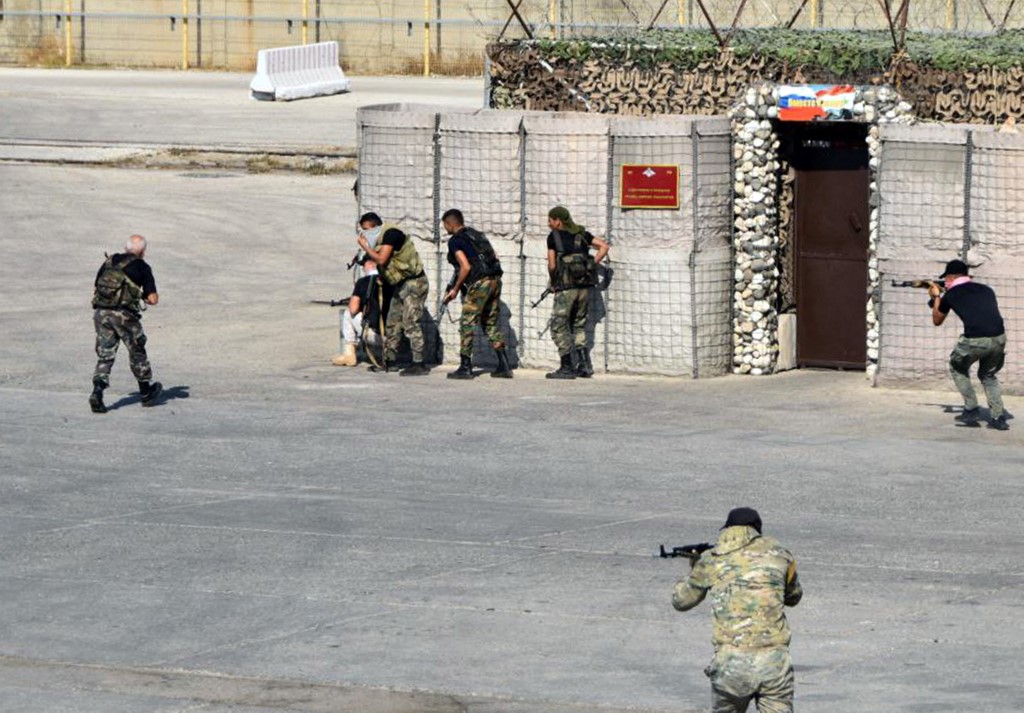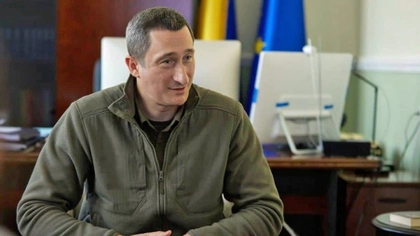Before the Russo-Ukrainian War, UAVs (unmanned aerial vehicles), or drones were toys for civilian hobbyists. Belatedly, they became a niche within the Armed Forces of Ukraine (AFU).
Today, no unit can do without drones: reconnaissance drones, attack drones, bombers, and FPV fighter systems. The technology and techniques of drone warfare has progressed astonishingly over the past two years.
JOIN US ON TELEGRAM
Follow our coverage of the war on the @Kyivpost_official.
Now separate units of drone operators, their coordinators, and commanders are needed – entire battalions, consisting of hundreds of people. Earlier this year President Volodymyr Zelensky mandated the creation of a specialized branch within the AFU dedicated solely to UAVs.
Kyiv Post goes to the front in the Donbas to see how the newly created battalion of unmanned systems, called “Heavenly Punishment,” part of the 54th Separate Mechanized Brigade of Hetman Ivan Mazepa, operates.
We drive on dusty roads to the front line. Right now, we are heading to the training ground where the 54th Separate Mechanized Brigade operators train to destroy enemy targets.
One of the operators demonstrates a development with a repeater. The battalion’s drones strike at all targets – personnel, equipment, fortifications, warehouses, and headquarters – day and night. One of the unit’s successful night bombers is Major Payne. He has already destroyed more than a hundred invaders and always has fresh battle stories.
“I’ve already lost count. More than 100. They’re orcs. A piece of equipment... I was an anti-tank operator with 12 tanks, 3 BMPs, and one unit with anti-aircraft artillery. The best target I hit was a dugout. The mine rolled right into the entrance. There were 8 Russians inside, and the next morning, none were found alive. There was also a time when I dropped a mine on a moving car. I had another task, but just a few seconds more, and the car with the orcs would have been hit – they managed to drive 50 meters away. It was a shame,” Payne said.
Learning to fly was not easy; it was a very long process. And the work itself is always very risky – the enemy tries to immediately detect the drone by radio signal and destroy it. Major Payne has experienced this many times.
“An interesting moment is when you’ve been discovered, they’re already targeting you, but you continue your work no matter what. It’s such an adrenaline rush and excitement! I’m a high-priority target for them, so it’s a specific, heavy responsibility. Everything is done at night, which complicates the work; you can hardly see anything, but you get used to it,” Payne said.
The 54th Brigade has many drone crews and operators like Payne. Their activities are coordinated from the headquarters, responsible for reconnaissance, coordination of crews, target identification, and execution. It is secretly located in a camouflaged area in the rear.
“We have Star Wars here!”This is the battalion commander with the call sign Khorth, who says that drones require coordination and control at the same level as other branches of the armed forces to work effectively.
“They monitor the situation along the front line, identify targets, and perform the function of battle capture!” the battalion commander said.
He explains how it works. Reconnaissance drones monitor the situation, and urgent messages are received directly from the front. The priority of targets is determined, and work begins.
“A command is given to the crews or means of destruction on the order of strikes; the sequence of crews is determined, and the command is given to commence work. Then, the results are summed up,” Khorth said.
“The type of ammunition is determined depending on the nature of the target, and it is assigned to specific crews. The priority of targets depends on the situation. For example, there may be an artillery installation covering our infantry positions. If there’s an active phase of assaults, the priority for us is enemy infantry. If there’s a lull, we look for trucks unloading ammunition,” Khorth thinks that progress comes not from a good life but from a lack of ammunition.
Now, drones complement artillery, but in the future, they may replace it. Even now, they hit targets over the entire range of distances – from several hundred meters to several tens of kilometers. Sometimes this is crucial.
“The toughest target? I’d say the most challenging from a drone operator’s perspective. The distance was 20.5 kilometers from the launch point, with an altitude difference of 150 meters. It was a Msta, an artillery unit,” the officer said. “This is an important target. Yes, we sometimes chase individual targets because we believe that any evil should be punished. During active assault operations, one crew reached a ratio of 1 to 1.5 – that is, one flight, one and a half targets. There were many targets – orcs. We counted not only the wounded but also the destroyed equipment and the orcs we killed.”
But different targets require different types of drones. Sometimes, even the same type of drone needs to be modified for each specific task. This is handled by a separate unit of “Fixiki” in the battalion, particularly a technician with the call sign “Mossad.”
“We manage to modify about 30 drones a day. Drones come in different forms – both from the state and volunteers. We modify and reflash them, preparing them for our needs because they come in raw. We also develop our equipment and repeaters,” Mossad said.
For each task a drone with specific characteristics is needed. So work is constantly ongoing. He already has a wall full of his creations.
“These are hexacopters – they can carry heavy loads. They are mainly used for dropping bombs... And here’s the wall of glory – drones we use! One of the types. This is a very specific type of war, and everything is prepared for a particular area of responsibility. We know where the electronic warfare system operates, at what frequencies, where the orcs operate, and how. We modify drones for each specific need,” Mossad said.
It all started for him, as it did for many others – as a hobby. Only during the full-scale war did the Army appreciate the potential of drones.
“This was my hobby, even before the war. I’ve been at war since 2014, and this hobby developed when drones were not yet used by the Armed Forces of Ukraine. I used to race drones and tried to introduce them to the army many times, but it was ignored. Then they were adopted,” Mossad said.
What is the future of drones? Khorth feels that artificial intelligence will significantly impact the development of military technologies soon, and the war may change its appearance.
“There are ideas for automatic target detection, where the drone itself decides which target to hit. There are AI concepts that, when the signal is jammed, can return the drone home because the program remembers the path. There’s also AI that determines the point of destruction or aiming, like in ballistics. Its possibilities are endless,” Khorth said.
Now the battalion needs significant upgrades for drones and work systems, and you can help with a donation via the link in the description. Meanwhile, the team continues to hold the defense in the East. Here, everyone believes in Ukraine’s victory.
“This is my land, I was born here, I grew up here,” Payne said.
“For me, Ukraine’s victory means the respect of our neighbors and the understanding that it’s better not to mess with us under any circumstances, and the opportunity to live in our own state the way we want,” Khorth said.










